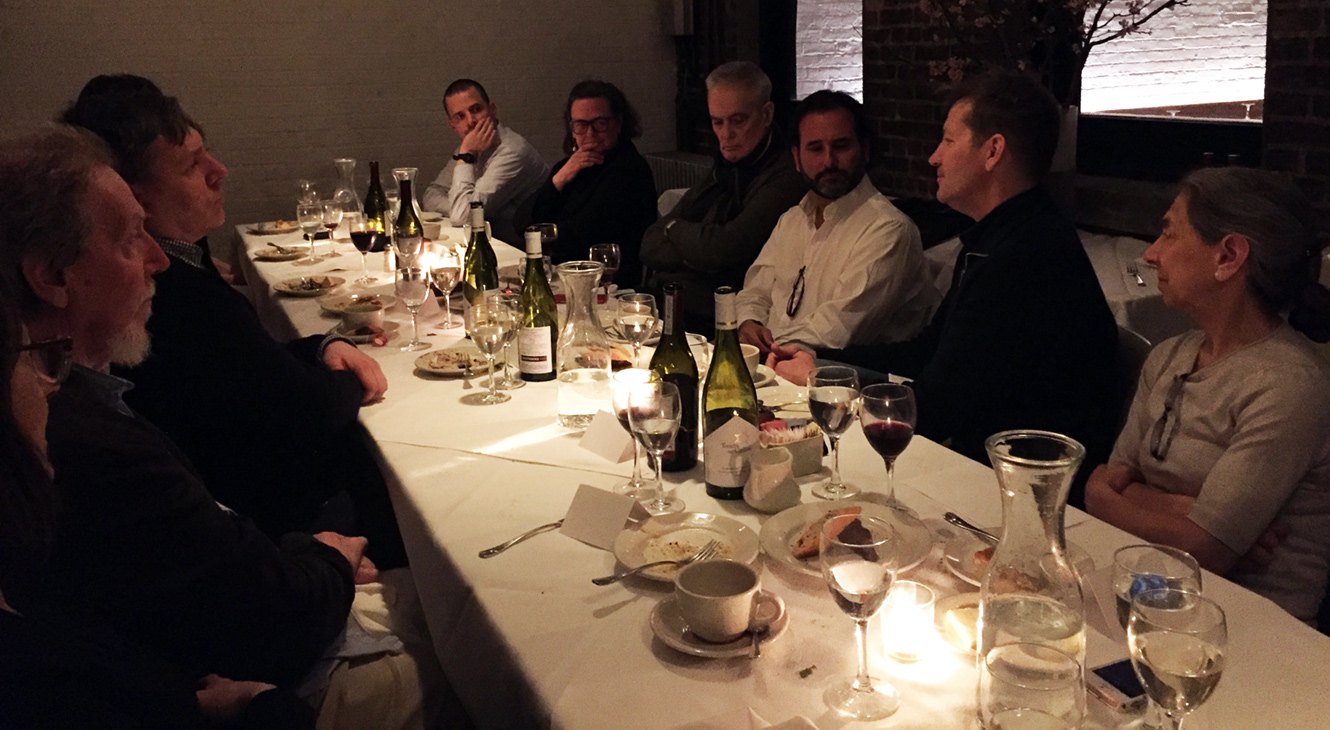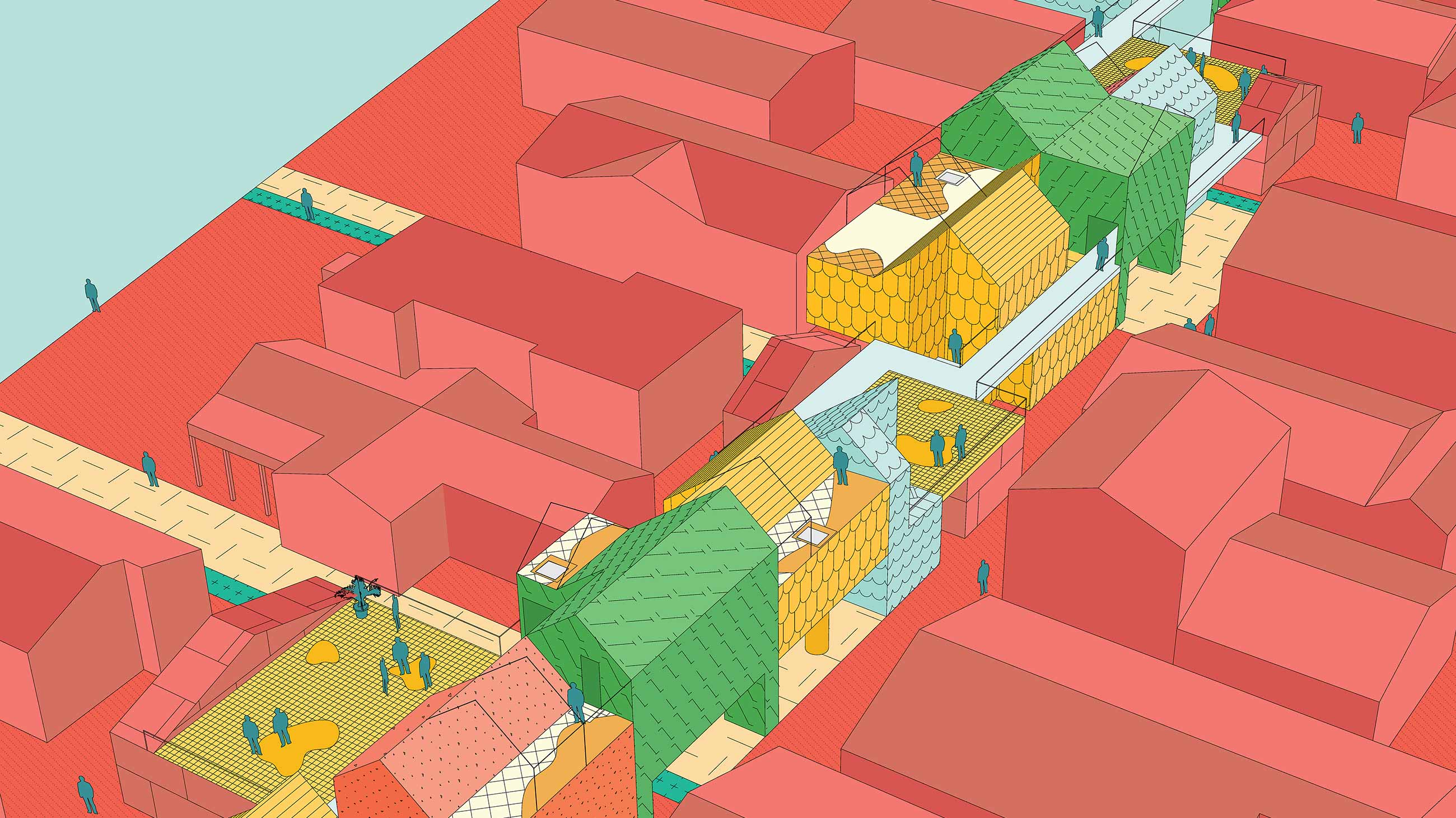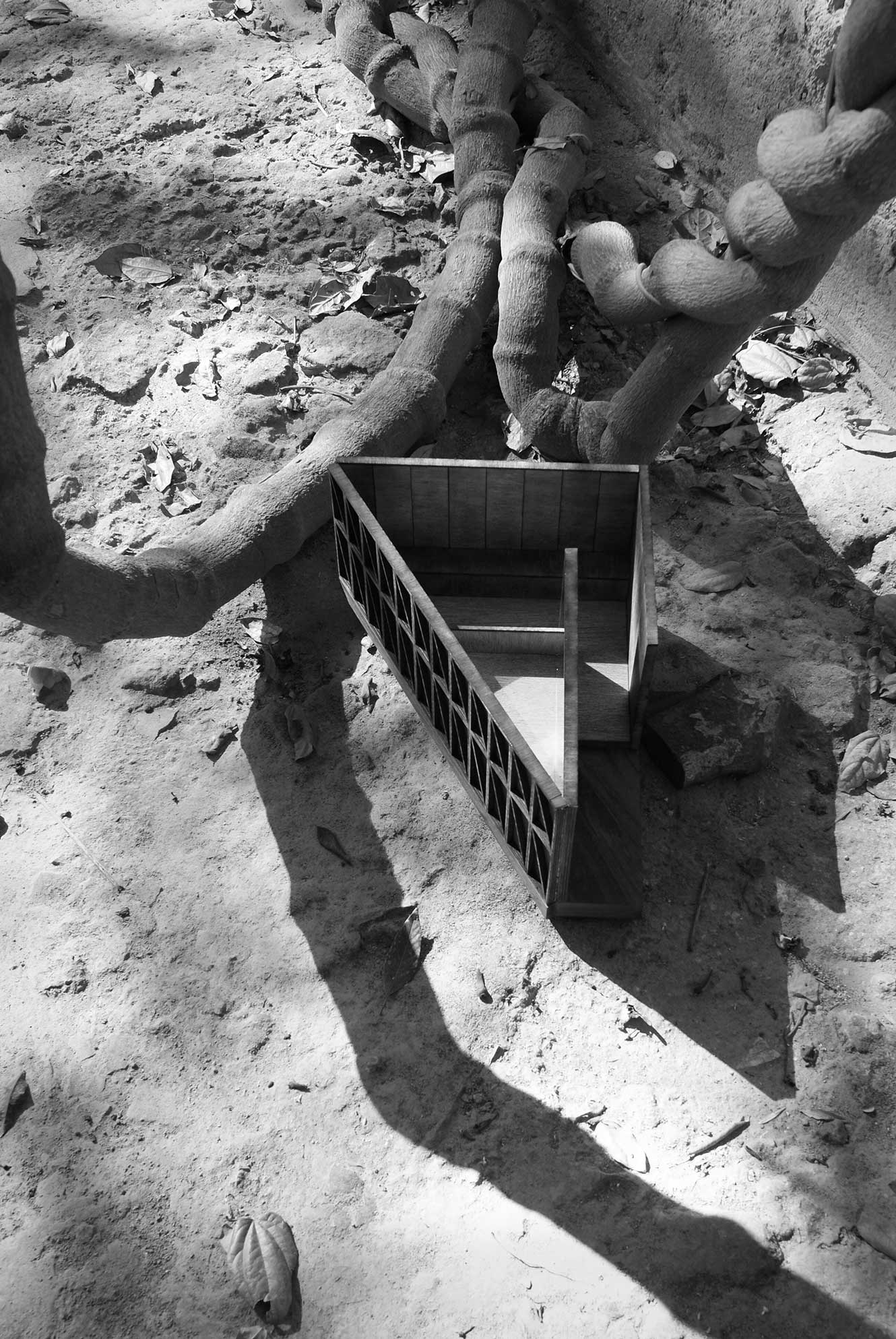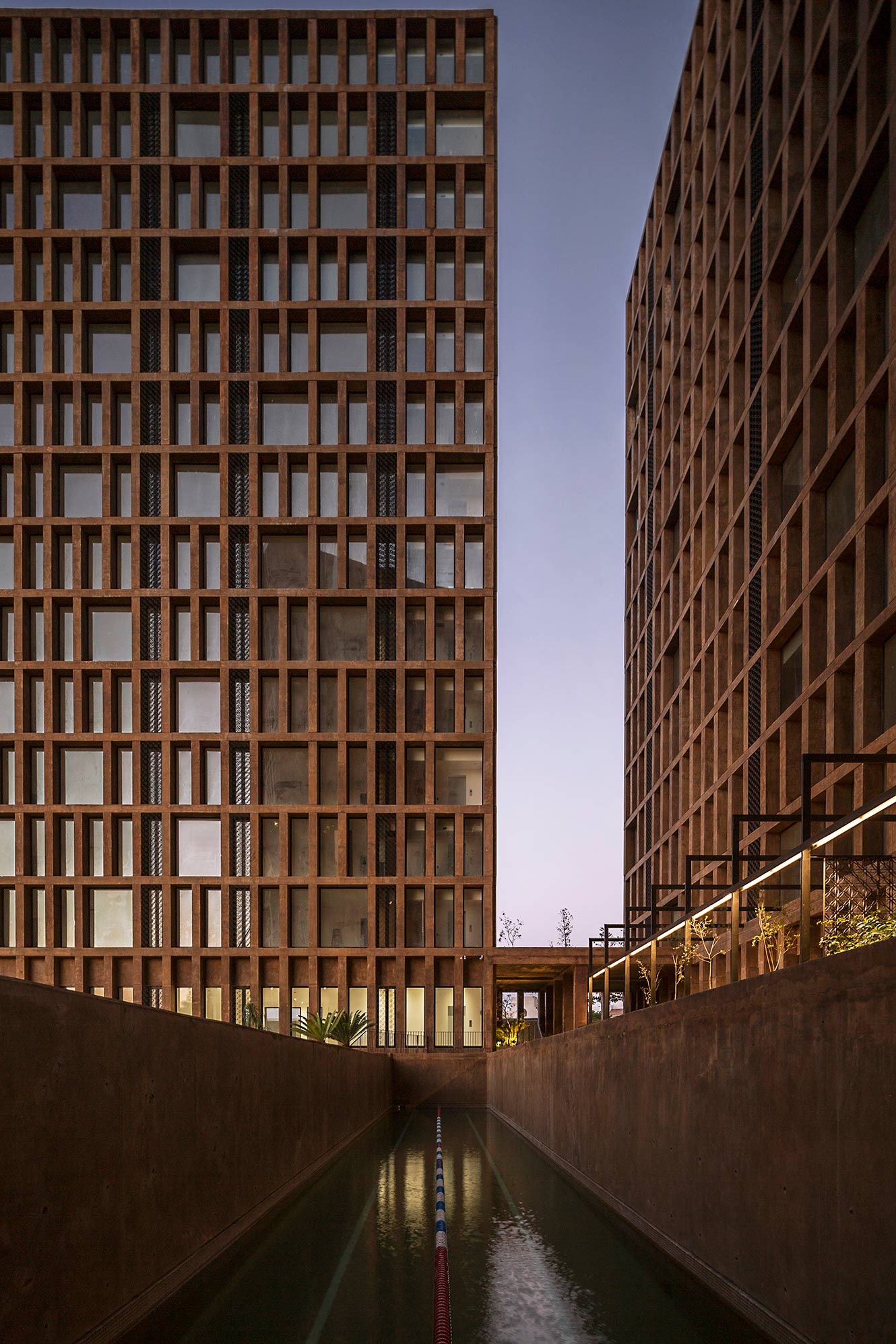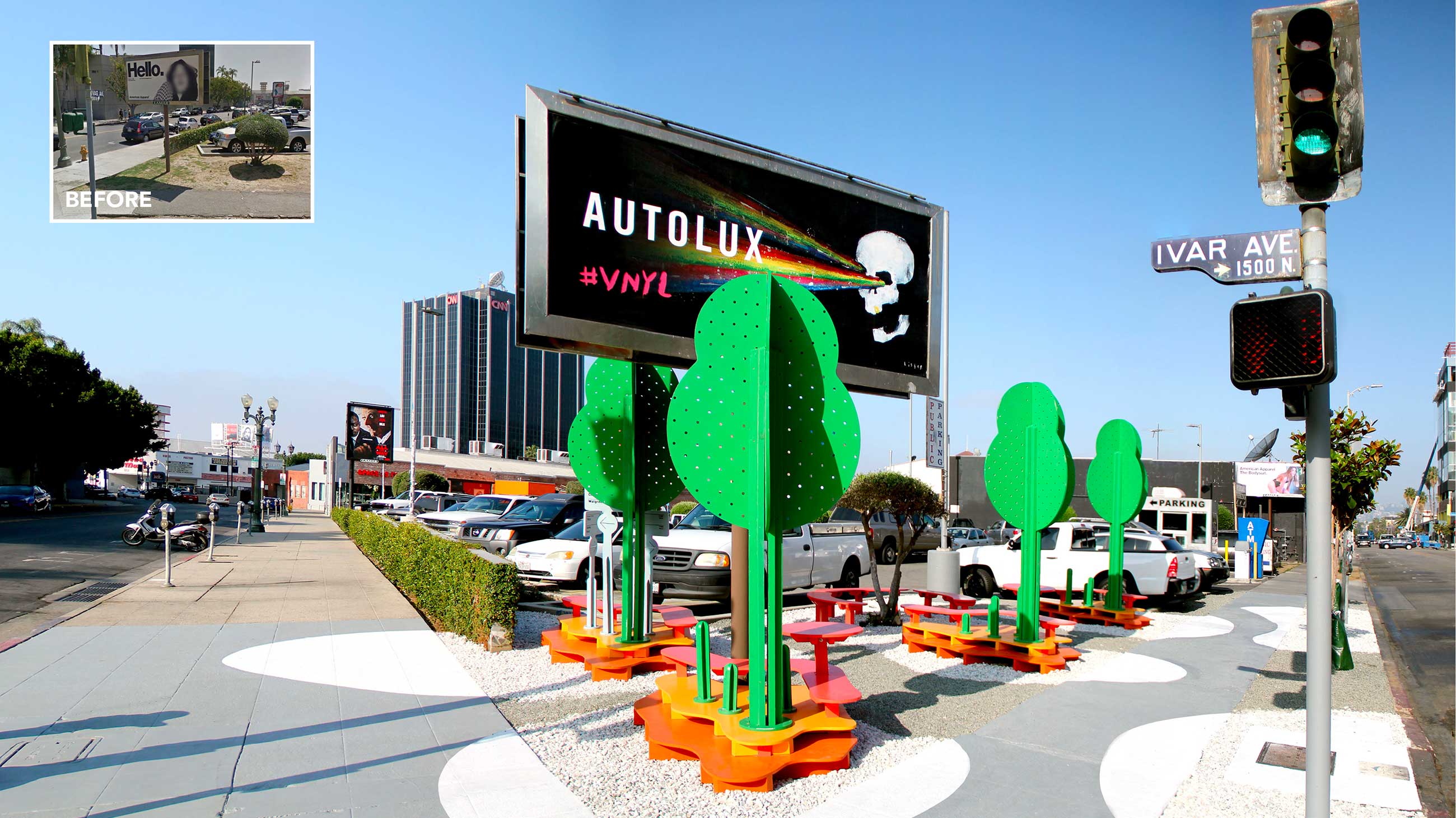On the Table: Dinner with Luis Aldrete and Helen Leung
Mexican architect Aldrete and LA-based policy expert Helen Leung discuss housing, policy, and time.
The League’s annual Emerging Voices program recognizes eight firms with distinct design voices. In March and April, each firm delivers a lecture, then joins prominent architects, critics, and others in the industry for dinner and informal conversation.
In the following, Guadalajara-based architect Luis Aldrete and Los Angeles-based Helen Leung, co-executive director of LA-Más, discuss housing, policy, and time.
Paul Makovsky, Metropolis: One of the biggest crises that I see today is affordable housing. LA-Más is doing really interesting work on this issue. Where do you see opportunities to improve the situation in LA, Helen?
Helen Leung, LA-Más: In LA, many affordable housing projects are spearheaded by developers, both for-profit and nonprofit, who use tax credits to build it. That federal funding can be unpredictable, and it’s funding that is complicated and expensive.
Developers, architects, planners, and city leaders need to figure out other ways to pay for affordable housing.
In other places, social housing is built by the private sector. I think that’s a very exciting possibility.
William Menking, The Architect’s Newsletter: That doesn’t happen in Los Angeles?
Leung: In LA, most affordable housing development is reliant on tax credits.
Moving to other funding mechanisms could potentially create more architectural opportunities. Today, because of the rules of the funding, you look at a design and you know, “Oh, that’s an affordable housing project.” Better design would mean that you can’t tell. That’s an opportunity for the future, especially since there’s so much development planned in LA.
Menking: Will Christopher Hawthorne support this, do you think?
Leung: Christopher Hawthorne has been the architectural critic at the Los Angeles Times, and he was just appointed Chief Design Officer by the mayor. I’m hopeful that he will be able to promote a design agenda, because the current threshold is fairly low. I’m hoping that he can really push some of our housing developments on a public scale. I don’t know what his agenda will be, but it is exciting that the city will have a chief design officer.
Rosalie Genevro, The Architectural League of New York: Luis, we marvel at what young architects get to do in Mexico. Do you look elsewhere and say, “Oh, it’s better to be there?”
Luis Aldrete: Mexico is having a very good moment. In general, it’s a great country to live in.
A lot of very good architecture is happening in Latin America overall. I think that’s because we’ve been living in crisis for many years. Those economic and political conflicts, they make us more creative. The crisis allows us to prove ourselves in our profession.
Genevro: That’s really interesting, because when we look at Mexican architecture, I think we assume that the opportunities are coming from economic growth—as the middle class and upper-middle class grow, it creates opportunities for designers. But you’re saying that architects are the ones making propositions to do a variety of things.
Aldrete: Yeah.
Makovsky: Do you think that the buildings you design in Mexico could be built in America?
Aldrete: No. There are different reasons for this. First of all, the law. The laws are very different in the two countries.
Second, the workforce. We have a lot of people that don’t know how to read and write. It’s ridiculous to give them a bunch of plans, because they don’t know how to read. So you have to do a lot of site visits and talk with a lot of supervisors to make things happen.
But this is an opportunity, because a lot of mistakes happen in construction, and for us a mistake is an opportunity to make things better. It’s impossible to operate that way in America, I think. When you are building something, it has to be very strict with all the plans, all the restrictions… If something happens, it’s a problem, not an opportunity. That is the big difference.
Construction is also very different because of the materials. In America, everything is prefab. In Mexico, people aren’t used to prefab materials; they are looking for something hard, stronger. So if you build something with prefab, you can’t sell it. It works against the developer.
Chris Leong, Leong Leong: In your lecture you talked about the idea of designing without details. That’s fairly provocative, because your work is actually fairly detailed and very materially rich.
Aldrete: Yes, this idea also comes from the realities of our workforce. In other countries, the construction drawings are very detailed and you have a lot of very standard materials. But if we try to do that in Mexico, the result is not good, because builders don’t have experience with it.
So when I say that we want to design without details, I mean that we don’t want to overdesign anything. A wall is a wall, and that’s it. It’s not a wall with a cornice. A window is just a window.
We like precision, but precision is different than detail.
Leong: One of the things that struck me about tonight’s presentation was that both firms are dealing with issues of locality and housing on both sides of the border. On one side, Luis is working with materiality, and Helen’s working with policy.
I’m curious—what are architects in Mexico doing in terms of policy and affordability? And Helen, what’s your long-term vision? Where do you guys want to be?
We don’t want to overdesign anything. A wall is a wall, and that’s it. —Luis Aldrete
Aldrete: It’s a very complicated question. Right now we are involved in a very large-scale housing project. We are doing a lot of research, because we think what the developer is proposing isn’t a good idea. The level of density they want doesn’t fit in well in the area of the city where they want to build this project.
Generally, it’s a very good idea to build dense social housing inside the city, because these projects are usually on the outskirts. But it’s very expensive to build infrastructure to support development on the edge of the city, and it also costs a lot for the people who live there to travel into the city. Nowadays, all these developments outside the city are empty. It’s like a ghost city.
So it’s a good idea to re-densify the center of the city—but not with the level of density that the developer is proposing. Guadalajara just came out with a new law that makes it possible to build very tall buildings. But most of the city is just two stories high. So now, in that historically two-floor city, we’ve started to see 12-, 15-, 20-floor buildings just beside these small houses.
You need density, but you can’t do it that way. I think the city needs to grow to five or six levels at the beginning. Then, after a few years, you go up.
But just generally, in terms of policy, it’s a very rare moment where you can do almost everything in Guadalajara.
Leong: Do Mexican architects want to get involved in shaping the zoning, or being at the table?
Aldrete: Yes.
Makovsky: Do public officials listen to you?
Aldrete: No. But a few years ago they asked us to be part of a government project, to make some decisions about the development of the city. We refused, because it was a very bad moment in terms of policy. We decided to just be part of an advisory group, and that’s it.
Leung: In terms of where we see ourselves in the future, we hope that our work shapes policy, changes the way that things are done—especially our pilot projects.
Makovsky: You mentioned that you work with a network of like-minded groups. Are they architecture firms or nonprofits?
Leung: Our clients and partners are seldom private entities. They’re often government entities, foundations, other community-based nonprofits. And because we’re a nonprofit urban design organization that works in community development, our networks are oftentimes the people who work in that area. It’s government wanting to invest in those underserved neighborhoods; community organizations fighting at a neighborhood scale. Those community organizations have on-the-ground organizing capacity, but they don’t have design expertise. They bring us in because we share their values.
Oftentimes we end up being the intermediary between political will, capital, and community needs and values. Being in that space is a real privilege, but it often means that we are not grassroots, we’re grass tops. We use our relationships with elected officials to advocate on behalf of community organizations.
This means that we have to maintain trust and respect from community organizations, but we also have to maintain a level of professionalism so that government officials know that we won’t get them in trouble if they fund us—that we can do a project that looks good, with a ribbon cutting.
It’s fairly rare to have designers in the world of community development, so we don’t have many architectural peers. Our nonprofit status means that we take on projects that traditional firms wouldn’t do because the money isn’t there.
Makovsky: Lyn, you’re working on government projects. What can you learn from a firm like LA-Más?
Lyn Rice, Rice+Lipka Architects: I’m really inspired by their work. There’s a kind of immediacy and a fast turnaround, almost like the way we would work on an exhibition. That is really a different pace than City work [in New York], where the bureaucracy is such that there are many steps in order to make even slow progress.
The issue of time is really interesting when both firms present together, because Luis strives for timelessness and LA-Más is on a deadline to make things happen in a hurry. The pairing spans the spectrum of desire in architecture: the desire to have real agency at a social level, but to also have work that is enduring.
Olivia Martin, The Architect’s Newspaper: Helen, where do you see the most call to action in your work? Do you feel like it’s coming from policymakers, or is it a more grassroots rallying cry?
Leung: We often get hired by elected officials and government entities. We think about where the needs are in LA, and we leverage that political will, making sure we align it with the grassroots. If an elected official wanted us to do something but there was no need on a community level, we wouldn’t do it.
We also have room to figure out what solutions look like. If housing is the issue, then what is the solution? The ADUs [accessory dwelling units] and granny flats, for instance: on a policy level, on a housing crisis level, everything came together.
Makovsky: When I went to visit your studio in Frogtown, I saw that next door there’s an architecture firm that occupies a very modernist building. There seems to be a clash, maybe, of their idea of how to develop Frogtown versus your approach.
Leung: You’re talking about the fight within a neighborhood as it changes. Is it going to keep the physical character, and if so, is that at the expense of the social, economic, cultural character? That’s Frogtown in a nutshell. It’s like Williamsburg [in Brooklyn] five years ago.
As the community is discussing where it wants to go, you end up having, in one instance, an architect who wants to keep that industrial feel, but that means that the density never goes up. And that means whoever’s going to occupy that space can afford five dollars per square foot.
If an elected official wanted us to do something but there was no need on a community level, we wouldn't do it. —Helen Leung
That tension is something that is worth really exploring. How do you keep the charm, the history of a place, but still make sure that it’s inclusive and serves multiple socioeconomic and cultural levels? That’s something LA still has not figured out. Lots of cities that are dealing with gentrification have yet to figure it out.
I’m optimistic that if we promote more good development—development where community voices are at the table—there is room for everyone. But it takes some intentionality.
It also takes effort for people to say, “I came here first, but I still want more people to come.” What you often hear is, “I got here, I got my property, I don’t want it to change, I don’t care that no one else has access to this.”
Menking: I was a student in the Bay Area when they were passing a ballot initiative around affordable housing in San Francisco, and there was a lot of that kind of discussion. San Francisco had this incredible planning director, Allan Jacobs, who was fighting for everything you’re fighting for. It was a really fascinating period in that region—a lot of people were working on these issues. But sadly, because of what’s happened in San Francisco and Silicon Valley, those plans have been subsumed by another reality.
I wanted to ask you a question. You seem almost wistful about developers building affordable housing, following more of a New York model. I think New Yorkers are maybe not so optimistic about that. Is there another option for LA that might not put so much faith in developers?
Leung: Recently, we had a Los Angeles ballot initiative that had elements of inclusionary zoning, which would mandate that developers incorporate some level of affordability in bigger, higher-density projects. It will be exciting to see if you can actually have successful mixed-income housing in a way that doesn’t feel like it’s all high-end, nor does it look like it’s just an affordable housing project.
California also used to have a redevelopment agency, which meant that the city was an active developer. That is no longer the case.
Menking: What about the city just building housing?
Leung: The city has built housing, but that’s not enough, and it’s not definitely not as effective as having the private sector do it. The redevelopment agency provided a government staff that was nimble and a big source of money—LA is still trying to figure out what it should do without that. Is the change going to come from the private sector? Or will it come from our housing authorities being more innovative?
I’m hoping that citizens take a longer, wider, more-inclusive view. We are a city full of immigrants and people with many different socioeconomic statuses, and I’m hopeful that Angelenos end up voting with their money and with their voices to say, “Let’s build more.”
Makovsky: One of the biggest crises that we see in cities is homelessness. Are you guys involved in that in any way, and is there a solution to it?
Leung: When we’re asked to do projects, the first thing some people say is, “Please don’t design so that homeless people will be able to come.” That’s unfair. We figure out how to work with the homeless population.
We’re working with the County of LA to push this provocative model of, can homeowners house someone who’s formerly homeless in their backyard? For our ADU work, we’re trying to give extra incentives to homeowners willing to rent to someone who’s formerly homeless or is low-income. In order to do that, we need to work with homeless service providers, because many of these formerly homeless residents have mental illnesses, have certain challenges. But with support, they can coexist in society.
Menking: Walter Hood designed a wonderful park in Oakland. It looks like a traditional park, but he snuck in all these things for homeless people to wash their clothes, to bathe.
Leong: Every day there are more and more homeless people. It seems like there are only two solutions: building housing faster, or building more of it. Do you think these can be tackled through policy?
Leung: Because homelessness is such a big issue, the citizens of Los Angeles voted for more money for housing for the homeless, as well as more services. So that’s what LA is trying to figure out next: there’s all this money, where should it go? It can’t just be one type of housing. It has to be shelter beds, it has to be transitional housing, it has to be permanent supportive housing, it has to be affordable housing, and then there also needs to be middle-income housing, workforce housing, luxury housing. You need housing at all scales.
Text edited and condensed.
Explore
City as border zone
Architects Ersela Kripa and Stephen Mueller, founders of El Paso firm AGENCY, discuss the reality and rhetoric of the US–Mexico border.
Notes on New York’s housing history
Historian Deborah S. Gardner offered thoughts on housing in New York City as part of the Architectural League's 1987 Vacant Lots project.
The cost of living
Rosalie Genevro reflects on the economics of affordable housing.

